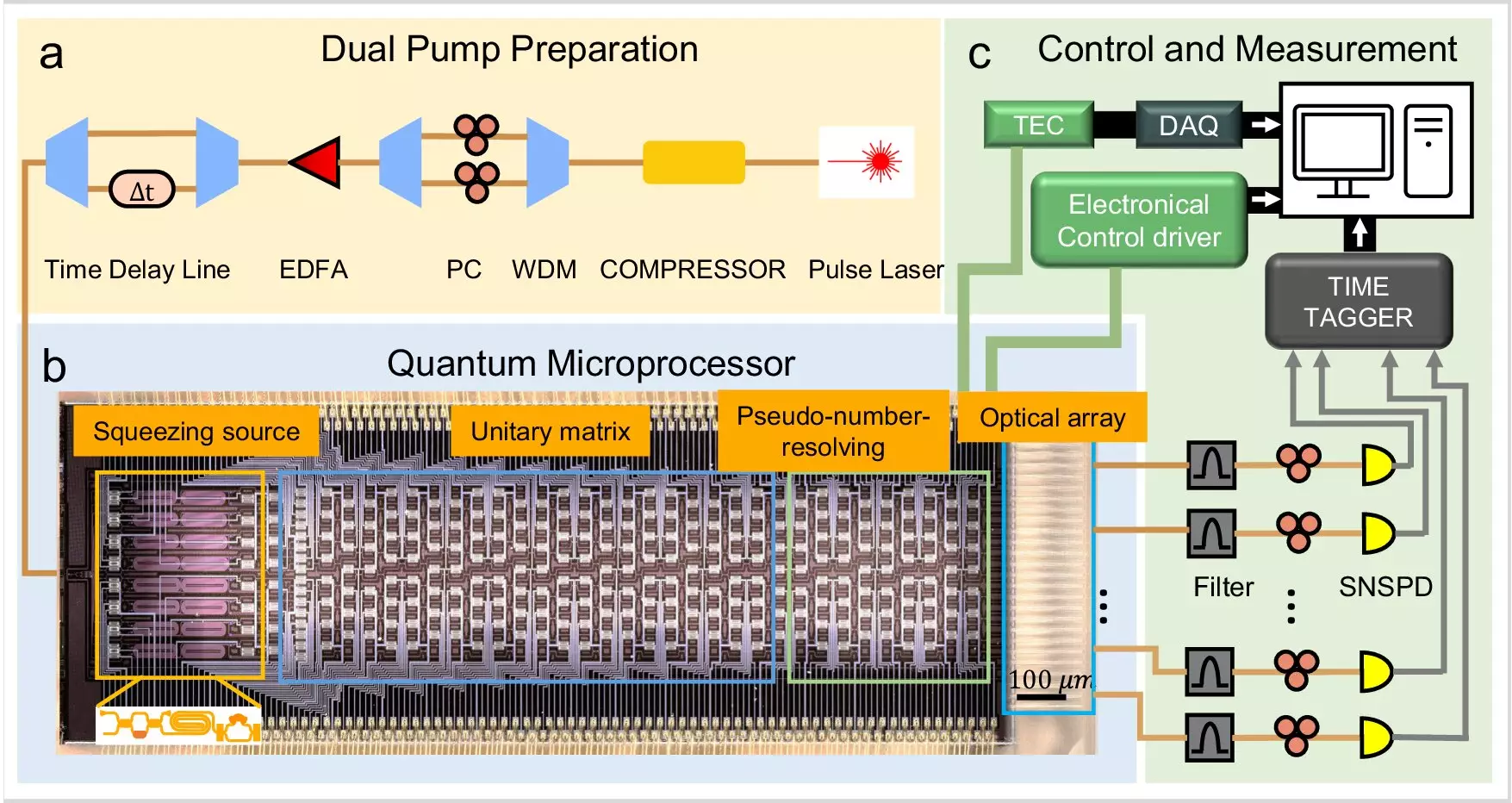Quantum simulation has emerged as a game-changing technology that transcends the limitations of classical computing, particularly in the realm of complex systems. While classical computers have significantly advanced various scientific fields, they often falter when addressing problems like molecular simulation, financial modeling, and cybersecurity. By leveraging the peculiar properties of quantum mechanics, quantum computers can more effectively tackle these challenges. In particular, simulation of molecular vibronic spectra is critical for comprehending molecular behaviors, an area where classical approaches typically fall short, especially when dealing with larger, more complex molecules.
The traditional methods used for simulating molecular vibronic spectra involve computational techniques that are both time-consuming and prone to inaccuracies. Factors such as low accuracy and inherent noise limit the capability of existing classical supercomputers to yield reliable results, especially for intricate molecular structures. Researchers have long sought efficient quantum algorithms and novel quantum hardware that could offer substantial improvements over classical models. This problem is not merely an academic exercise; the implications of successfully simulating molecular behaviors span various industries, including pharmaceuticals, material science, and artificial intelligence.
In a remarkable development, researchers at The Hong Kong Polytechnic University (PolyU) have unveiled a pioneering quantum microprocessor chip designed specifically for molecular spectroscopy simulation. This innovative research, led by Professor Liu Ai-Qun and Dr. Zhu Hui Hui, marked the first instance of such a technology reaching fruition in laboratories worldwide. The findings were published in the esteemed journal, Nature Communications, under the title “Large-scale photonic network with squeezed vacuum states for molecular vibronic spectroscopy.” Their work is not just a technological milestone; it carries the potential to redefine how we approach quantum chemistry.
The PolyU research team has gone beyond simple theoretical models to create a functioning quantum microprocessor capable of simulating the molecular vibronic spectra of complex molecules. Their 16-qubit quantum microprocessor chip integrates a linear photonic network paired with squeezed vacuum states—an advanced method that significantly enhances the simulation’s accuracy. This device is not just a standalone product; a complete system has also been built, integrating optical, electrical, and thermal components for optimal performance. This cutting-edge approach means the microprocessor can handle intricate quantum tasks faster and with higher fidelity than classical systems, leading to more accurate simulations of fundamental molecular interactions.
The implications of this research are multifaceted. Beyond merely solving molecular docking challenges, the quantum microprocessor holds the promise of improving processes like protein structure simulation and optimizing molecular reactions. As Dr. Zhu noted, their approach “could yield an early class of practical molecular simulations that operate beyond classical limits,” signaling the opportunity for quantum speed-ups in vital quantum chemistry applications. This technology serves as an essential building block for a new era of computational methods that promise to exceed the capabilities of conventional computers.
Looking ahead, the research team aims to expand the capabilities of their quantum microprocessor, tackling even more complex phenomena that could have significant benefits for both society and industry. As Professor Liu stated, their ambitions are driven by the potential real-world impact of these quantum simulation technologies. The scalability of their approach promises to unlock new avenues for practical applications that could revolutionize how various scientific fields approach molecular interactions and reactions.
The successful implementation of a quantum microprocessor for molecular spectroscopy represents an essential step forward in both quantum technology and practical quantum computing applications. By harnessing the unique properties of quantum mechanics, researchers at PolyU are not only addressing long-standing challenges in molecular simulation but are also paving the way for the future of quantum chemistry. With the backdrop of ongoing advancements, the collaboration between academia and industry holds the potential to unleash a plethora of innovative solutions, ultimately benefiting diverse sectors and enhancing our understanding of the molecular world.


Leave a Reply